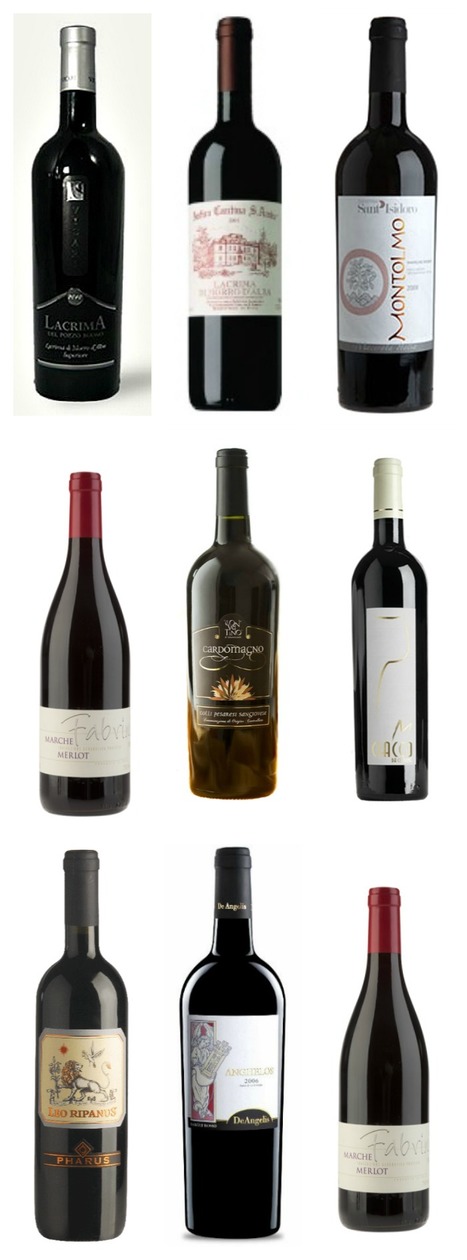Le Marche produces a large variety of wines including 13 varieties of wine carrying the D.O.C. (Denominazione di Origine Controllata) label. Many of these wines are little known outside of Italy but visitors to the region have a pleasant surprise when they try the local wine produced by many small aziendas and cantinas and the fantastic prices![...]
Rosso Conero
Produced from grapes which ripen in a restricted sunny area in the foothills of the mountain which goes by the same name just south of Ancona. The prevailing protagonist of it’s composition is the fruit of the Montepulciano vine to which may be added Sangiovese in quantity not exceeding 15% of the total. It is an exceptional wine with a remarkable Mediterranean temperament, a ruby red colour, clear and brilliant, dry flavour pleasing to the taste, rich fruity nose, full bodied and velvety. Alcohol content not less than 11.5%.
It was particularly appreciated by the ancient Romans and is an ideal companion of roast meats, game and in general all rich and spicy food – a strong personality
Lacrima di Morro d’Alba
A high quality wine produced in a small area north of the River Esino in the province of Ancona with Morro d’Alba at it’s center. It is produced from the lacrima grape, native of the area. A rich ruby red with violet reflections in young wines. A pleasant, dry but smooth taste and a rich fruity nose reminiscent of bilberries and violets. Almost a varietal, a maximum of 15% of other grapes of approved varieties may be added for correction purposes, normally Montepulciano and Verdicchio. After the first racking in late December a 2nd fermentation is induced by the addition of a must produced from partially dried grapes (a method known as the ‘governo Toscano’).
Normally consumed as a young wine during the year of bottling but sometimes aged for up to 3 years. Best served at below room temperature (around 15°C) Goes well with Vincisgrassi, lasagna, pasta dishes with a tomato and meat sauce, all roast and grilled red meat and game.
Rosso Piceno
Amongst the thirteen, the one that covers the largest zone of production covering the entire lowlands and medium hills of the centre and south of the region. In the most part, the territory inhabited by the ancient Piceni.
Sangiovese and Montepulciano are used in it’s production with added small measures of Trebbiano and Passerina. A beautiful ruby red colour and a pleasant dry and fruity flavour graded at 11.5% increasing to 12-13% which qualifies the wine as ‘superiore’
Via
Mariano Pallottini



 Your new post is loading...
Your new post is loading...










